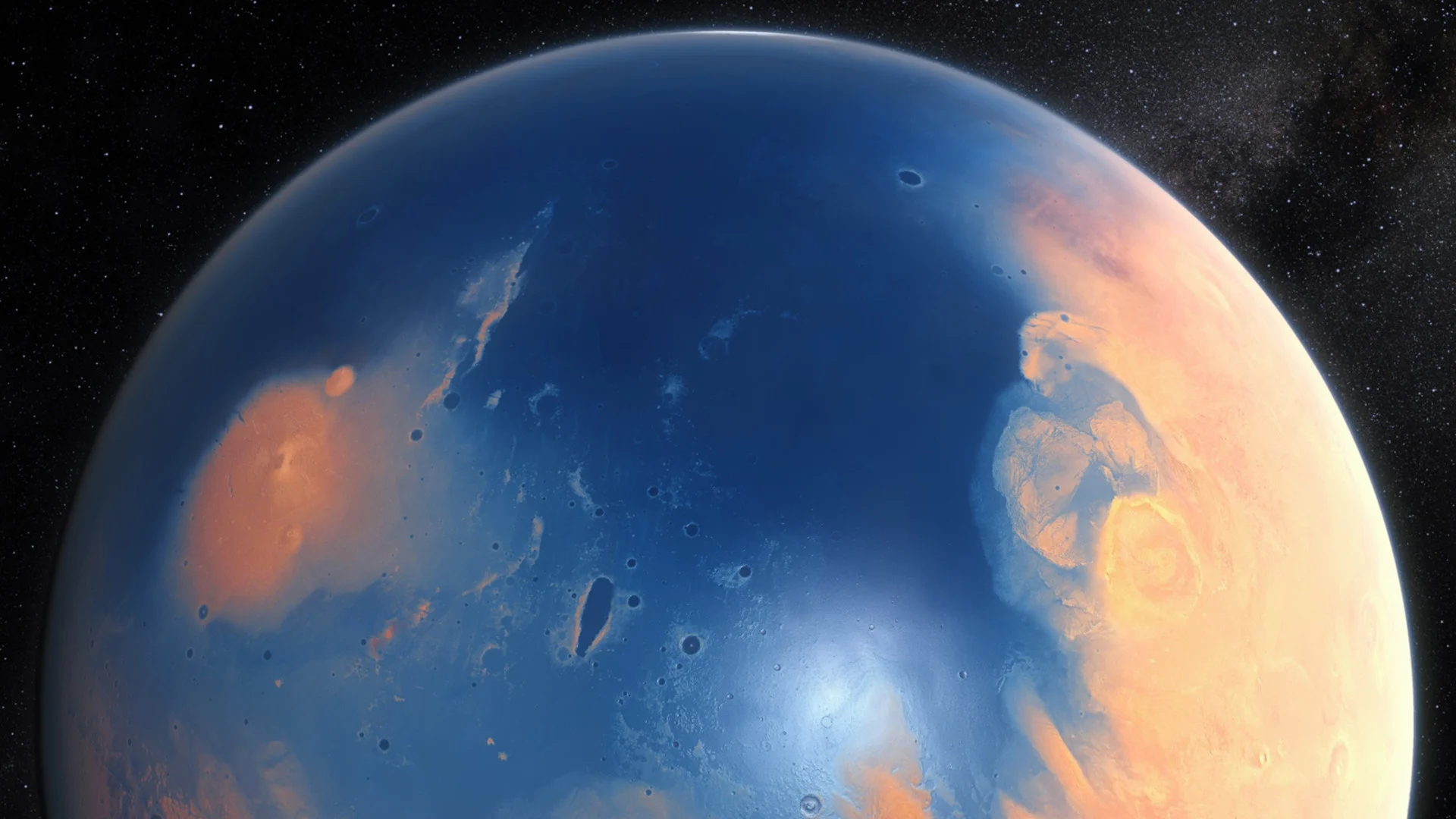
Ancient asteroid impact may have triggered Mars mega-tsunami
What's Up In Space? A Martian crater may be the source of an ancient mega-tsunami, 'snowball' planets could harbour life, and NASA's new planet hunter scores a 'hat-trick'.
Roughly 66 million years ago, an asteroid or comet slammed into Earth, blasting out a 150 km wide crater in what is now the Gulf of Mexico and Yucatan Peninsula. In addition to the planet-encircling blast wave that resulted from this, the impact also touched off a 100-metre high mega-tsunami, which expanded outwards through the shallow ocean to wash up onto the shores of the Gulf Coast.
According to a new study, Mars appears to have suffered a similar event around 3.7 billion years ago, and scientists believe they have discovered ground-zero for this planet-altering impact.
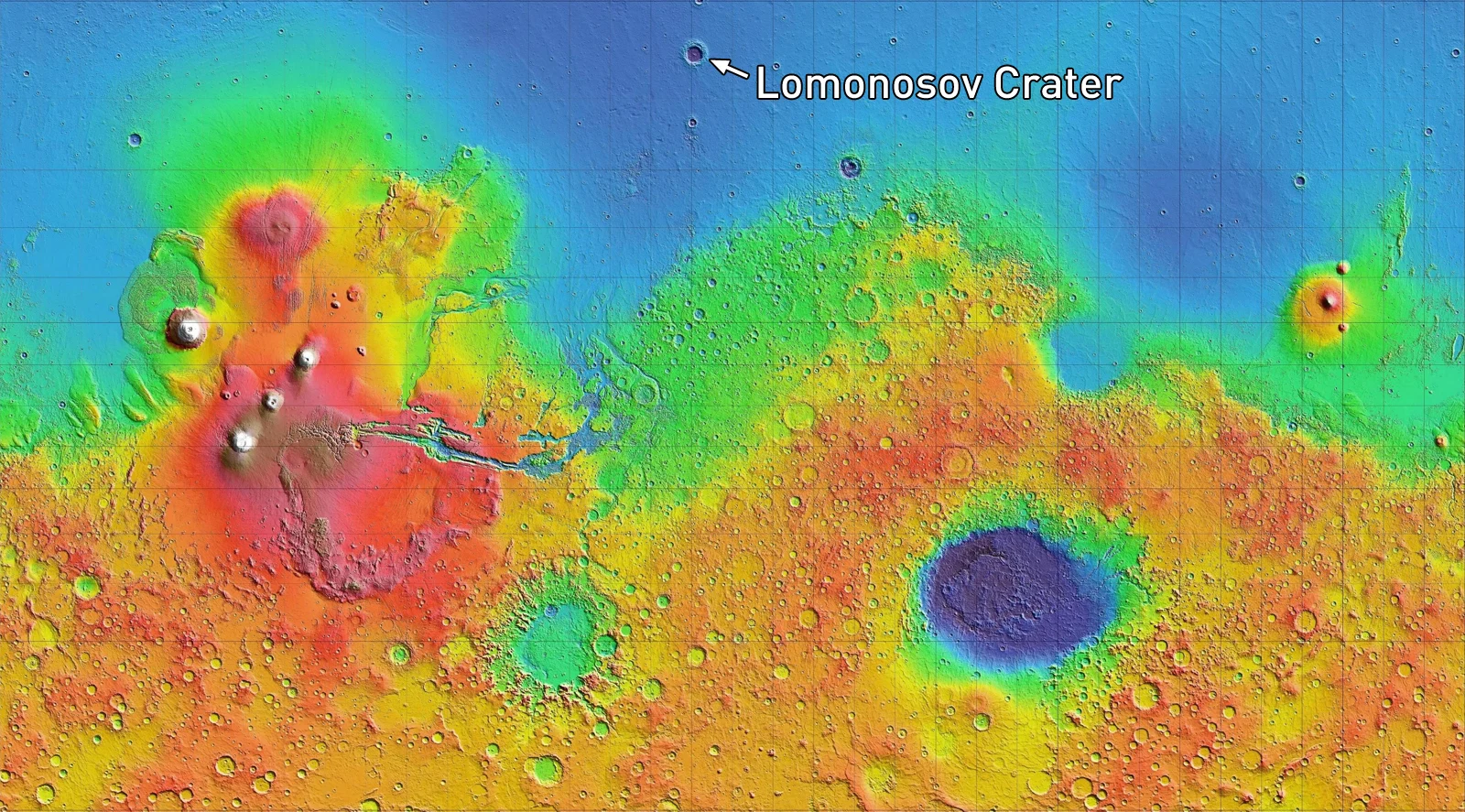
This false-colour topography map of Mars plots highlands in shades of yellow, orange and red, and lowlands in greens and blues. The vast lowlands in the northern hemisphere are thought to have been a shallow ocean in Mars' distant past. Lomonosov Crater, indicated above, is the possible 'ground-zero' for an ancient Martian megatsunami. Credit: NASA/Scott Sutherland
After seeing strange formations in satellite images of Mars, which resembled the lines on a human thumbprint, scientists began speculating about what could have caused these appropriately named Thumbprint Terrain features.
One idea that appeared to explain it best was that a mega-tsunami, towering around 300 meters high, slammed into the coastal regions of Mars' northern ocean, and washed ocean sediments far up onto land, leaving behind these thumbprint patterns as the water receeded.
Continuing this research, Francois Costard, a scientist at the French National Centre for Scientific Research, lead a team of scientists to trace the patterns backward, attempting to find out where such a mega-tsunami could have originated from.
After identifying 10 craters in the northern plains that were roughly of the right size and shape to match the kind of impact needed, they managed to narrow it down to just one - Lomonosov Crater.
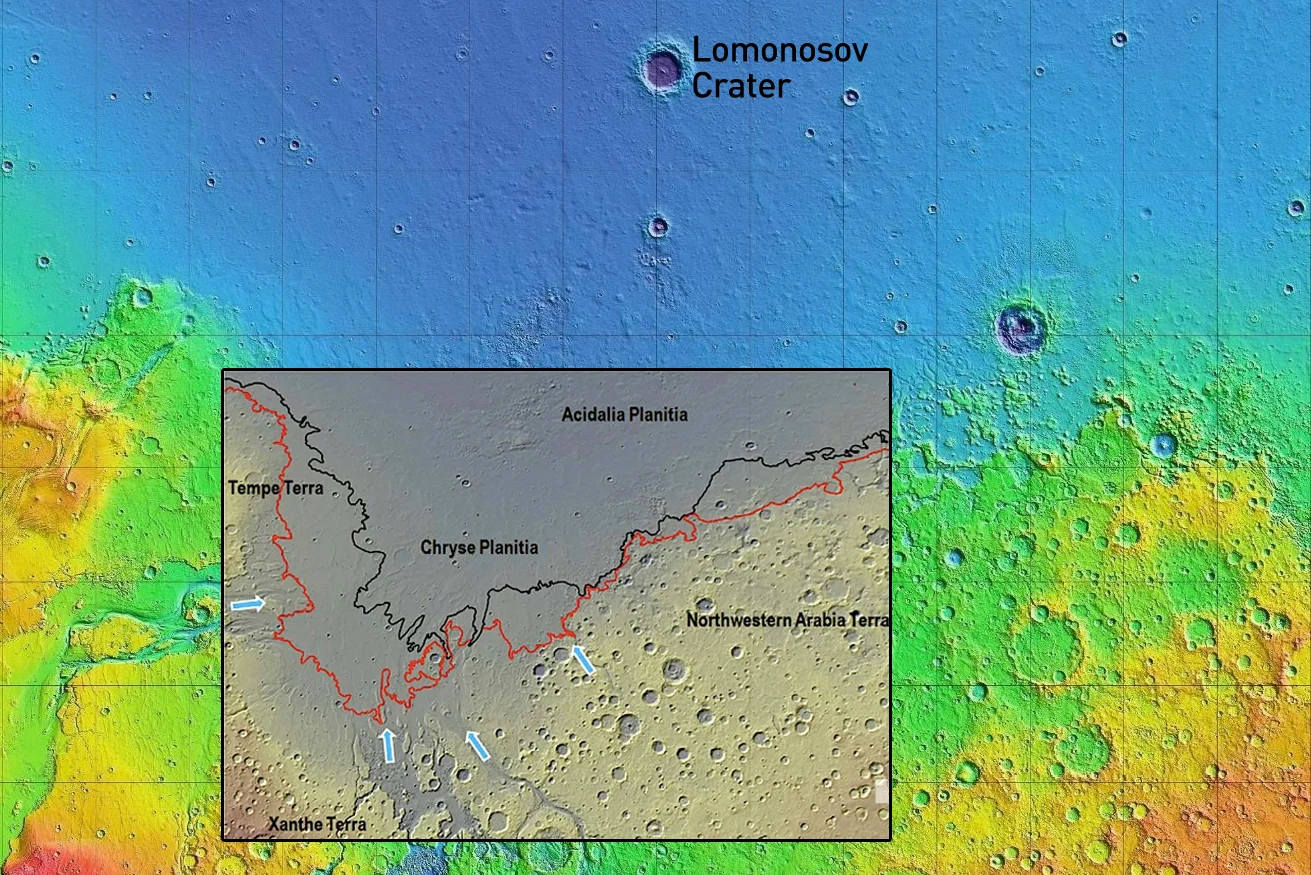
This close-up of the Mars topography map highlights Lomonosov Crater, and includes an insert from a 2016 study that put forward the idea that tsunami waves influence Martian terrain features. Credit: NASA/Rodriguez, et al.(2016)/Scott Sutherland
This 120-km wide crater stands out quite strongly in the terrain maps of Mars, above, and it apparently fits quite well with what the researchers were looking for.
It has the right age, of around 3 billion years old. Although it's smaller than the Chicxulub crater here on Earth, it's large enough that the impact would have produced the right size of tsunami in Mars' deeper ocean. Apparently, the shallow waters of the Gulf of Mexico limited the size of the tsunami caused by the Chicxulub impact. It's estimated to ahve been over 4km high if it was in deeper ocean! Also, the shape of the crater and the way its edges eroded after impact, implies that it formed under water.
According to the research paper, all of these facts together "strongly suggests" that Lomonosov was ground zero for this ancient impact, and the source of this immense Martian mega-tsunmai.
DON'T IGNORE SNOWBALL PLANETS
A new study conducted by researchers at the University of Toronto is providing further proof that the so-called 'habitable zone' around stars is far too limiting for our search for life out in the universe.
In its ancient past, Earth was once a snowball - a world almost completely encased in ice, due to carbon dioxide levels in the atmosphere dropping to extremely low levels. This was caused by the carbon cycle become skewed in the opposite direction we are seeing today. More carbon dioxide was being removed from the atmosphere than was being produced, and with the CO2 becoming locked away in sediments under the ocean, the planet became too cold and the oceans froze almost completely to the equator.
Earth eventually came out of that 'snowball' phase due to volcanoes blasting enough extra CO2 into the air to help warm things up. This allowed the planet to heat up enough for the life that had survived under the frozen oceans to once again colonize the surface.
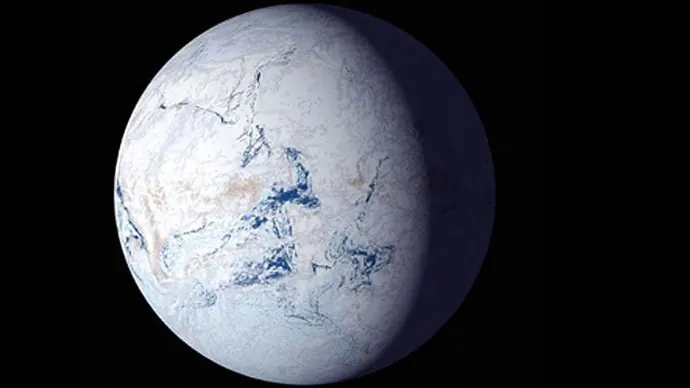
Earth covered with snow and ice, could have had large patches of land that could have sustained life. Credit: NASA Astrobiology
With this knowledge in mind, four University of Toronto researchers - Adiv Paradise, Kristen Menou, Diana Valencia and Christopher Lee - asked an important question:
"If a planet were permanently locked in this snowball state, could it still support life?"
The answer, as they discovered, appears to be "yes"!
In their study they write: "we show using a general circulation model that terrestrial planets in the inner habitable zone are able to support large unfrozen areas of land while in a snowball state. Due to their lower albedo, these unfrozen regions reach summer temperatures in excess of 10°Celsius."
There's an important caviet to their findings, though.
At the same time as these unfrozen areas of land could have liquid water that would help support isolated pockets of life as we know it, the exposed surface would also continue the same processes that removed CO2 from the atmosphere, which forced the planet into its 'snowball' phase in the first place. This would leave the rest of the planet encased in ice, potentially even permanently, if the CO2 weathering processes are strong enough to balance any volcanic emissions.
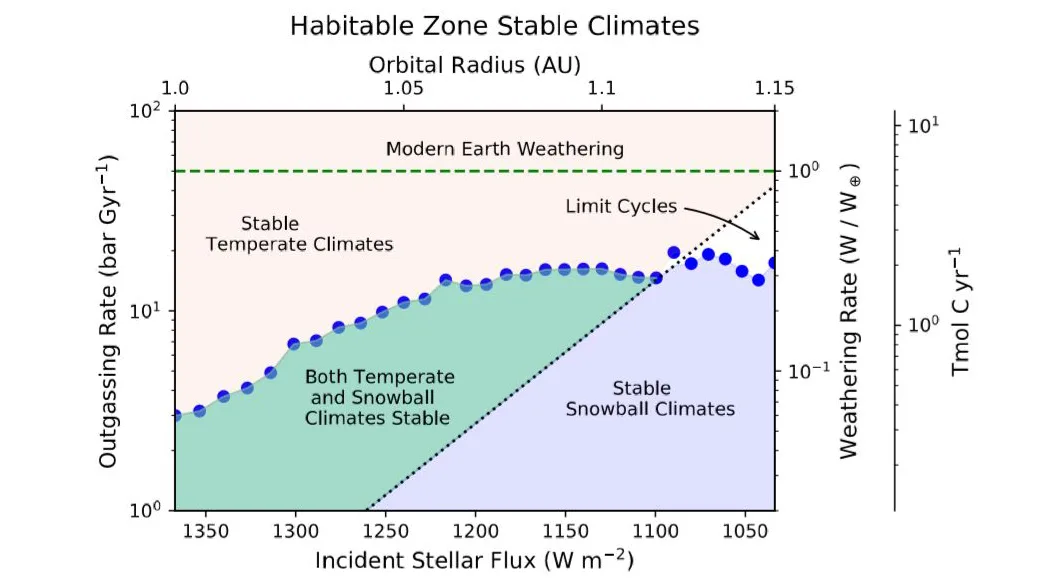
This graph shows how planets can become stuck in the 'snowball' state, with volcanic activity (left axis) balances out CO2 weathering rates (right axis). Solar output lies along the bottom axis. Credit: AGU
So, while these 'snowball' planets are ones that we may have passed over before, in our search for alien worlds that may support life, this new research is showing that they definitely deserve some attention.
NASA TESS FINDS TINY SYSTEM OF THREE PLANETS
NASA's latest exoplanet hunting satellite, the Transiting Exoplanet Survey Satellite or TESS, just found three previously unknown planets in a tiny solar system, not too far off from our own. They're calling the discovery a 'hat trick'.
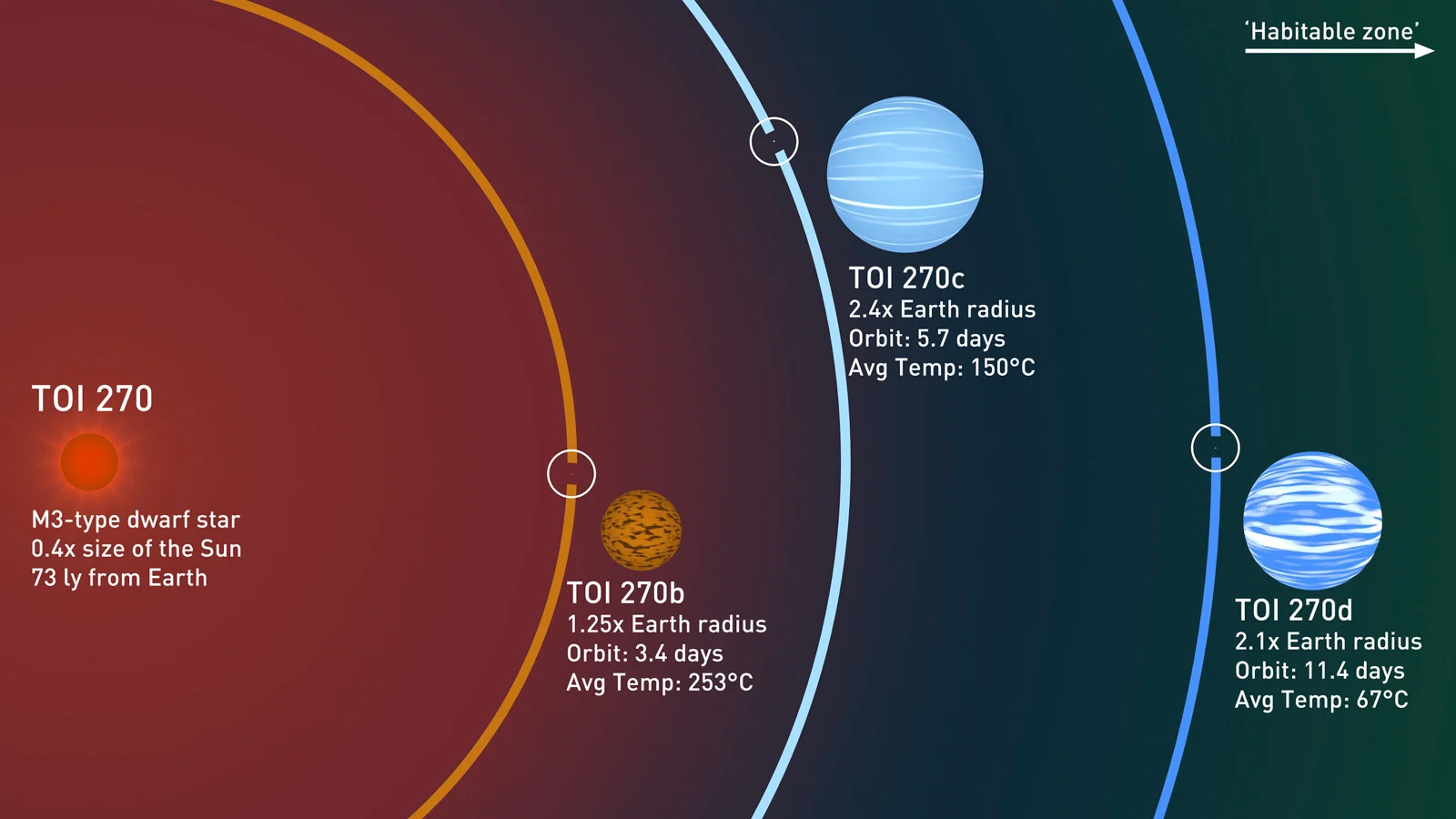
Credit: NASA’s Goddard Space Flight Center/Scott Wiessinger/Scott Sutherland
The above infographic shows the key features of this tiny star system, known as TOI 270, which is detailed in a new study published in Nature Astronomy.
Located around 73 light-years away from Earth, in the southern constellation Pictor, this star is less than half the size of the Sun. The three planets found orbiting the star by TESS form an extremly compact system that is more comparable to Jupiter's system of moons than it is our own solar system.

Credit: NASA’s Goddard Space Flight Center
Of course, these planets are larger, and hotter than the moons of Jupiter.
The innermost planet, TOI 270b, is about 25 per cent bigger than Earth. It orbits its compact host star every 3.4 days, is most certainly tidally-locked to its star, and it would have an average surface temperature (on the day-side) of 253°C.
TOI 270c, the next planet out, is the largest, is nearly two and a half times the size of Earth, and it orbits its star every 5.7 days, with a surface temperature of around 150°C. TOI 270d, the outermost planet of the three is just over twice the size of Earth, orbits every 11.4 days, and has a slightly more tolerable (but not comfortable) average temperature of around 67°C.
NASA notes that none of these temperatures account for any atmosphere of these worlds. Planetary atmospheres can have an insulating effect, as we see with Venus, Earth and Mars, all of which see higher surface temperatures than they should, given their distance from the Sun, due to the presence of greenhouse gases (such as carbon dioxide).
"An interesting aspect of this system is that its planets straddle a well-established gap in known planetary sizes," Fran Pozuelos, a coauthor of the study from the University of Liège, told NASA. "It is uncommon for planets to have sizes between 1.5 and two times that of Earth for reasons likely related to the way planets form, but this is still a highly controversial topic. TOI 270 is an excellent laboratory for studying the margins of this gap and will help us better understand how planetary systems form and evolve."
Come back every Tuesday for more What's Up In Space!
Sources: Astronomy | AGU | ASU | AGU | NASA











